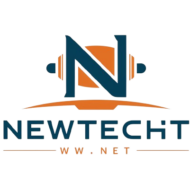Since the emergence of online learning, there has been debate as to whether online lessons are better than traditional classes. There have been competitive currents with valid arguments for and against both. Despite the growing trend of online education, many parents prefer traditional school to be one of the best education systems. As technology progresses and people’s schemes become even busier, the conventional education system seems to be losing control of modern society.
This means that enrolling in an online course offers students the opportunity to save more tuition and training camps while enjoying more flexibility. A disadvantage for many children who are used to home or online education is the dramatic reduction in freedom in a traditional learning environment. Traditional education systems require students to take classes every day for a specified number of hours, usually after strict teaching hours.
Students in this situation prefer to be “forced” to first plan classes and then plan other activities around them. Traditional classrooms have competed with increasingly popular virtual classrooms since the development of information technology. Online courses are an alternative to regular classrooms for students who want to obtain a cheaper and faster diploma. In a year or two, students can obtain a diploma without even knowing their teachers or colleagues. Still, many students see traditional classrooms as a more efficient way to learn and improve social skills.
Many schools around the world have already embraced the fairly new concept of online education. But as with any technical development, there is a lot of skepticism about educational technology. Traditional and online learning institutions have their advantages and disadvantages. While traditional classrooms have some positive social aspects that can be lost in some online virtual learning environments. In addition to flexibility over time, there is also flexibility in the material studied.
Most traditional educational institutions do not have flexible hours and many schools have consequences for not attending class or wasting too many school days. Traditional education, such as public and private Pay someone to take my online class education, is not the only form of education and there may be disadvantages, along with benefits for students. In traditional classrooms, students must give their opinion, give presentations and speeches.
At university level, online education enables students to gain the traditional university experience. Online courses and programs typically offer cheaper learning opportunities than traditional educational options. Recent reports indicate that an undergraduate course at a traditional university or college costs an average of $ 85,000. On the other hand, an online title is estimated to cost an average of $ 30,000.
Some students prefer human interaction and in this case personal learning is the best solution. New technology offers the opportunity to take courses that are not even available in your settings. So, according to the students’ decision, what kind of learning do they prefer to take. So why not take the opportunity and decide which education system is right for us at some point?. Traditional personal lessons offer teachers the opportunity to have more personal interaction with students. When evaluating online lessons vs. Traditional lessons, it is very important to take into account your own unique learning style and your programming needs.
Many students prefer personal interactions over technology-mediated conversations. Some students need constant assurance that what they are doing is right and that they are moving in the right direction, so they need feedback to keep them moving. Traditional education, also known as primary, conventional or ordinary education, refers to long-established customs that society traditionally uses in schools. Some forms of educational reform promote the application of progressive teaching practices and a more holistic approach that focuses on the needs and self-control of individual students.
